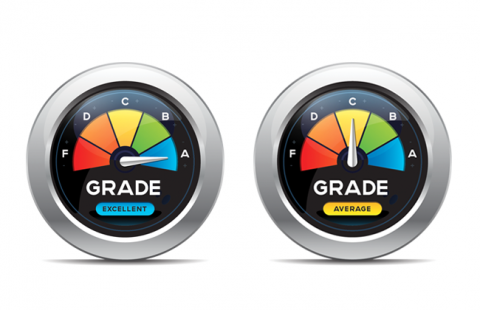No doubt your board is talking more these days about sustainability CSR (corporate social responsibility), and DEI (diversity, equity, inclusion). All of these are related to ESG – the acronym that stands for Environmental, Social, and Governance.
ESG embeds environmental and social investment into enterprise governance and encourages socially responsible investing (SRI) in capital markets. Today there are a number of agencies that provide ESG scores for companies. Similar to the ratings provided by credit-rating agencies, the better the ESG score, the more attractive the company is as an investment. For this reason, boards are paying closer attention to how ESG is being addressed in their companies.
In the quest to boost ESG scores, some companies are adding a Chief Sustainability Officer to their C-Suite team. However, ESG success cannot be accomplished by this role alone. It requires each member of the C-Suite team to take actions within their functional areas of responsibility.
[Also read: IT leadership: 3 strategies to build employee development programs.]
This includes the CIO role, which is uniquely positioned to be a strong leader on ESG. Because CIOs are responsible for enterprise technologies, they have the most complete view of the interdependencies and interactions of people, processes, and technologies across all business functions. They can leverage their knowledge to help the company achieve its ESG objectives.
6 ESG considerations for IT leaders
Here are six ways that the CIO can emerge as an ESG thought leader:
Environmental
1. Energy consumption reduction
Look across the organization and there are quick wins to be had. Remind people to turn off their electronic devices when not in use. For computers, even if people prefer to put them in sleep mode you can still realize an annual savings of $15 per computer. Data centers can be resource hogs. When feasible, work with a data center that is green-certified.
2. Sustainable use of AI
Training an artificial intelligence (AI) model is computing-intensive and can thus add to your company’s carbon footprint. By partnering with a cloud service provider that is committed to reducing its carbon footprint, you reduce yours in turn. Then you can focus on leveraging AI to address sustainability issues for your company. For example, in the energy sector, AI is fundamental to building smart grids. In manufacturing, AI can be integrated with robotic process automation (RPA) techniques to improve factory efficiency.
Social
3. DEI-focused technology solutions
There are tech solutions that address talent acquisition, employee development, employee engagement, and DEI analytics. In addition to the usual technology fitness assessments, your expertise can be applied to help assess the solutions for company cultural fit and appropriateness of user experience (UX) for diverse groups. Moreover, be the voice of reason that technology is not the magic bullet to solve all DEI challenges. It still requires the direct involvement of people!
4. Socially responsible application of technology
Social scoring criteria concern the company’s accountability to its customers. If the company isn’t intentional in ensuring its products and services address customer respect and well-being, there can be unintended consequences. Some examples:
- Due to a design flaw, a soap dispenser could not recognize the hand of a Black person.
- In 2018, the Hawaii Emergency Alert system issued a warning of an incoming ballistic missile, causing widespread panic. It turned out this was due to human operator error. The system design had not included safeguards to prevent this from happening.
- Zoom was providing data to third parties without users’ knowledge, even if users signed in as anonymous.
The CIO should play a leading role in ensuring that security, privacy, ethics, and compliance are embedded in the design phase for all products and services.
Governance
As CIOs, our professional lives are already heavily concentrated on governance. You can advance the governance aspect of ESG – and the good news is, you may be doing some of this already.
5. Data privacy
Consumers, ESG raters, and investors are becoming increasingly aware of the implications of data privacy. To date, data privacy hasn’t been prioritized in ESG disclosures unless the companies operate in certain markets. That situation is starting to change. Advocate for data privacy to be a pillar in your company’s ESG strategy. Ensure that you have implemented robust privacy controls. Ensure that privacy is embedded in your design processes.
[ Read also: 5 ways to improve enterprise data privacy ]
6. Compliance reporting
Granted, the global landscape for ESG reporting requirements is in flux. Because you have that unique end-to-end enterprise view as a CIO, you can set the foundation to be flexible in meeting current, changing, and future requirements. Understand and document the enterprise business capabilities and the underlying data.
Making an impact
An ISACA governance expert and colleague of mine, Mark Thomas, said, “ESG is not a fad. There’s more to it than just getting a good ESG score. It’s about doing the right thing.”
CIOs can play an integral role in driving progress toward ESG goals to both meet business objectives and do the right thing. A successful CIO now must not only have a solid understanding of the business but also be able to integrate ESG into the enterprise strategy and daily operations. This means it is increasingly important for CIOs to arm themselves with the knowledge and best practices around ESG as part of their continuous learning.
You have an opportunity to emerge as an ESG leader, not only for your company but for your community as well. Carpe diem!
[Where is your team's digital transformation work stalling? Get the eBook: What's slowing down your Digital Transformation? 8 questions to ask.]




